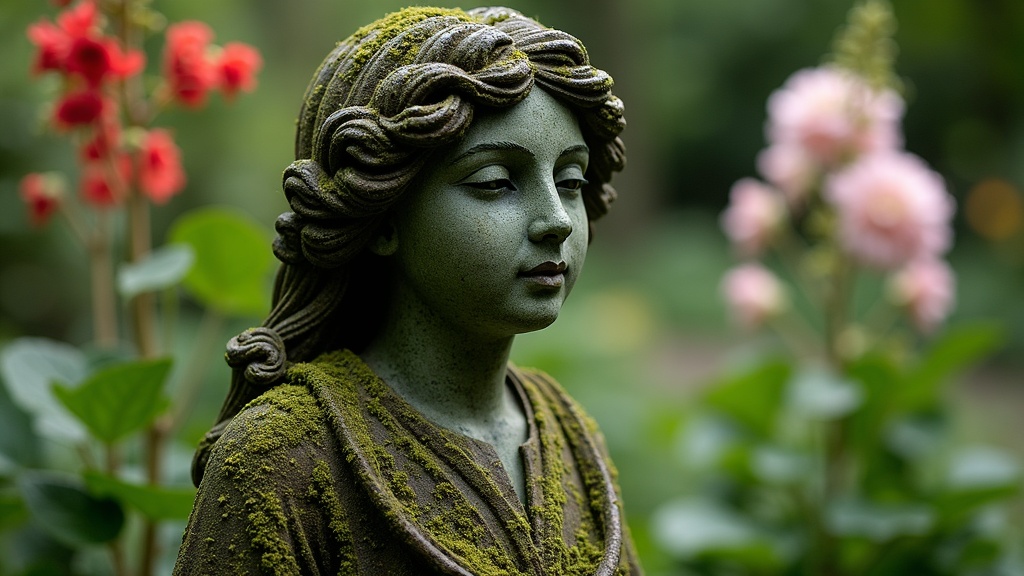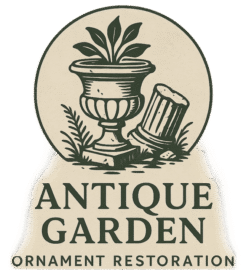 Antique garden features like stone statues, wrought iron benches, or old fountains add a lot of charm to any outdoor space. The problem? Years of weather can leave them looking battered, chipped, or even unstable. Protecting and maintaining these pieces isn’t only about keeping them pretty; proper care helps preserve history and keeps your garden looking awesome for years to come.
Antique garden features like stone statues, wrought iron benches, or old fountains add a lot of charm to any outdoor space. The problem? Years of weather can leave them looking battered, chipped, or even unstable. Protecting and maintaining these pieces isn’t only about keeping them pretty; proper care helps preserve history and keeps your garden looking awesome for years to come.
Rain, frost, sun, and moss can all take a toll on old materials. Without some effort, you might end up with cracks, corrosion, or faded details that aren’t easy to repair. Luckily, there are some straightforward steps you can use for weatherproofing antique garden features, whether they’re made from stone, metal, wood, or terracotta. I’ve collected some tried-and-tested methods here to help you keep those treasures in top shape with minimal fuss.
Start With a Careful Inspection
Before grabbing the sealant or rust remover, take a few minutes to really look over the piece you want to protect. Weatherproofing is most effective if you catch issues early, and every antique will have its own quirks.
Things to Look For:
- Cracks or chips, especially in stone or marble
- Signs of rust on metal features
- Areas where wood feels soft, spongy, or discolored
- Moss, mold, or lichen buildup
If you spot any loose parts, crumbling details, or extreme wear, consider getting advice from a restoration specialist before jumping in. Antique features are often irreplaceable, so caution is always a good choice.
Cleaning Antique Garden Features Safely
Weatherproofing starts with getting rid of grime, algae, moss, and dirt. But don’t be tempted to blast everything with a power washer; gentle cleaning works best for older pieces.
Gentle Cleaning Methods:
- Use a soft brush or sponge with water for basic dirt
- Add a little mild soap for tougher buildup—but rinse thoroughly
- Try a 1:1 mix of white vinegar and water for removing algae on stone (test in a small area first)
Avoid harsh chemicals or wire brushes. They can scratch soft stone, strip patina off metals, or soak into wood and cause more trouble down the line. Always allow pieces to dry completely before sealing, especially if you used any water in the cleaning process.
Choose the Right Weatherproofing Products
Now comes the main step: choosing a good protective product for your feature. Not all antiques need the same treatment, so it helps to know what works for each material.
For Stone and Concrete:
- Look for breathable masonry sealers that block moisture but let vapor escape
- Avoid glossy finishes if you want to keep the weathered look
For Metal (Iron, Bronze, or Copper):
- Remove rust with a wire wool pad, then wipe clean
- Apply a clear outdoor metal wax or a rust-inhibiting spray; reapply every year for extra protection
For Wood:
- Choose an oil-based preservative or exterior wood oil, like teak or linseed oil
- Make sure the wood is dry before sealing to stop mold growth
For Terracotta and Earthenware:
- Use a breathable clay pot sealer on the inside and outside
- Bring items inside or under cover in freezing temps; frost cracks are tough to fix
Applying Sealants and Protective Coatings
Good application makes a huge difference in how long weatherproofing lasts. Always follow the instructions on the product, and don’t rush the process. Applying multiple thin layers gives better protection than one thick coat.
Handy Tips for Application:
- Apply sealant on dry, mild days so it cures properly
- Use clean, soft brushes or cloths to avoid scratching antique surfaces
- Work outdoors or in a very well-ventilated area when using chemicals
Let each layer dry completely before adding another. For bigger items, a paint sprayer can give even coverage, but check that your chosen sealer is spray-compatible first.
Smart Seasonal Maintenance
Even the best sealants need a little upkeep; think of weatherproofing as an ongoing habit, not a onetime task. An extra bit of work each season can make a world of difference for your antiques, especially as weather patterns become a bit less predictable in recent years.
How to Maintain Antique Garden Features:
- Give features a quick clean in spring and fall to clear away leaves and moss
- Reapply protective coatings based on the manufacturer’s timeline (usually every 12-24 months)
- Check for damage after bad weather like storms, snow, or extreme heat
- Cover delicate items with breathable tarps over winter, or move them indoors if possible
Keep in mind, leaving antique wood, terracotta, or soft stone outdoors in harsh winter climates isn’t ideal. Short term storage in a shed or garage can really extend their lifespan. If you have room, consider using shelving or racks to keep fragile items up off the ground for even more protection from dampness and cold.
Extra Tips for Preserving Character
Part of the charm of antique features is their weathered look. There’s no need to strip all that character away; just make sure you’re protecting the structure, not hiding the history.
- Skip harsh paint or thick plastic coatings that trap in moisture and cause more damage
- Select matte or natural-finish products if you want pieces to keep their aged appearance
- Repair loose or cracked joints with lime mortar (for old stone) or professional wood glue (for benches and planters)
If you enjoy a patina on bronze or iron, just seal with a clear wax or oil rather than trying to restore a shiny finish. It’s really about slowing down new damage, not erasing the past. Also, keeping a garden journal to note when you last did maintenance or spot trouble areas will help you stay on top of things year after year.
Common Problems & Solutions
Moss and Lichen Keep Returning
Moss loves damp, shady corners. You can brush it away and use a little vinegar solution, but it might keep coming back if drainage is poor. Raise features slightly on bricks or stones, or trim back nearby plants to let in more sunlight. Installing a gravel bed under especially moss-prone items might help, too.
Rust Doesn’t Stop Spreading
Some antique metals develop “active” rust even after treatment. Remove as much rust as you can, then seal with a wax or anti-rust spray. For severe rust, consult a specialist before trying repairs yourself. Sometimes, periodic light sanding and prompt resealing are your best bet to keep corrosion from spreading too far.
Cracks in Terracotta Pots
Cracks are tricky since water gets in and expands when it freezes, making the problem worse. Seal small cracks with clear waterproof glue and avoid using them for water-holding plants outdoors during winter months. If a pot is especially meaningful, consider using it purely for decoration instead of as a planter.
Final Thoughts & Practical Next Steps
Weatherproofing antique garden features doesn’t need to be stressful. A bit of gentle cleaning, picking the right products, and being consistent with maintenance goes a long way. These simple habits keep your garden treasures strong, beautiful, and safe from the worst the seasons throw at them. Plus, you get to keep their unique character alive in your outdoor space.
Quick Action Checklist:
- Inspect your antique features carefully twice a year.
- Clean gently with soft brushes and mild products.
- Choose a breathable sealer or wax that matches the material.
- Apply coatings in thin, even layers; let them dry fully.
- Store or cover fragile or porous items before winter hits.
Got a tricky antique in your garden? Drop your questions below—happy to help share ideas or troubleshoot your biggest preservation puzzles!

We have some lovely statues in our garden that came with the house. They are concrete and not painted and they seem to be getting blacker over time. I didn’t realize that there was anything that could be done for them, but after reading this article I think it may be worth trying to clean them and find a masonry sealer that can maybe preserve their looks a bit better. Thank you for this and I am going to make this a my weekend project.
Hello Michel ????
Thank you so much for your thoughtful comment — it truly means a lot! I can tell you’ve got a real appreciation for your statues and the care that goes into preserving them. Don’t be afraid to jump in and start your own restoration project — it’s such a rewarding experience to see a weathered piece brought back to life by your own hands. Take your time, enjoy the process, and let the details guide you. You’ll be amazed at how even small steps can make a big difference. ????????️
You’ve got this, Michel — and I can’t wait to hear how your restoration turns out!
— Richard